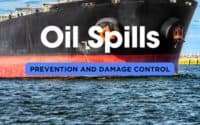Top 40 Clean Energy Innovations in Maritime Shipping

As the maritime industry faces increasing pressure to reduce its environmental impact and comply with stringent emission regulations, the adoption of clean energy innovations has become paramount. From harnessing renewable energy sources to implementing advanced technologies that enhance fuel efficiency, the industry is undergoing a significant transformation. This article explores the top 40 clean energy innovations that are leading the way towards a more sustainable and eco-friendly future for maritime shipping. These advancements not only contribute to the reduction of greenhouse gas emissions but also offer economic benefits through improved operational efficiency and lower fuel costs.
1. Wind-Assisted Propulsion
Wind-assisted propulsion involves using sails, kites, or rotor sails to harness wind energy to propel ships, significantly reducing fuel consumption and emissions. This technology is making a comeback with modern innovations that increase efficiency and reliability. Companies like Norsepower have developed rotor sails that can be retrofitted to existing ships, demonstrating fuel savings of up to 20% in trials.
2. Battery-Electric Propulsion
Battery-electric propulsion systems use large-scale batteries to power ship engines, eliminating the need for traditional fossil fuels. These systems are particularly effective for short-sea shipping and inland waterways. Advances in battery technology, such as those by companies like Corvus Energy, are making this a viable option for larger vessels as well.
3. Hydrogen Fuel Cells
Hydrogen fuel cells generate electricity through a chemical reaction between hydrogen and oxygen, producing only water and heat as byproducts. This technology offers a zero-emission alternative to conventional marine fuels. Companies like TECO 2030 are developing modular fuel cell systems that can be integrated into new and existing ships, supporting a transition to cleaner maritime operations.
4. Biofuels
Biofuels, derived from renewable biological sources such as plant oils, algae, and agricultural waste, offer a more sustainable alternative to conventional marine fuels. They can often be used with minimal modifications to existing ship engines. Bio-crude, developed by companies like Unnmukt Urja, can be a drop-in replacement for heavy fuel oil, significantly reducing carbon emissions without requiring major capital investments.
5. Solar Power Integration
Solar power integration involves outfitting ships with solar panels to harness solar energy for auxiliary power needs or to supplement main propulsion systems. Solar panels can be installed on the decks and superstructures of ships, reducing the reliance on fossil fuels. Projects like the Solar Voyager and vessels from Eco Marine Power showcase how solar energy can be effectively utilized in maritime applications, promoting greener shipping practices.
6. LNG (Liquefied Natural Gas)
LNG is a cleaner-burning alternative to traditional marine fuels, reducing sulfur oxide (SOx) emissions by nearly 100% and nitrogen oxide (NOx) emissions by up to 90%. It also decreases greenhouse gas emissions by 20-30%. Many shipping companies are investing in LNG-powered vessels and retrofitting existing ships to use LNG, helping to meet stricter emission regulations and improve air quality.
7. Ammonia as a Marine Fuel
Ammonia, a zero-carbon fuel, is gaining attention as a potential alternative for the maritime industry. It can be used in internal combustion engines and fuel cells, emitting only nitrogen and water vapor when burned. Research and pilot projects are underway to develop ammonia-compatible engines and establish the infrastructure needed for its production, storage, and distribution.
8. Air Lubrication Systems
Air lubrication systems reduce the friction between a ship’s hull and the water by creating a layer of air bubbles along the bottom of the vessel. This technology can lead to significant fuel savings and lower emissions. Companies like Silverstream Technologies have developed air lubrication systems that can be retrofitted to existing ships, with some vessels reporting fuel savings of up to 10%.
9. Shore Power (Cold Ironing)
Shore power allows ships to plug into the local electrical grid while docked, enabling them to shut down their auxiliary engines and reduce emissions in port areas. This practice, also known as cold ironing, helps improve air quality in ports and reduces noise pollution. Many ports worldwide are investing in shore power infrastructure to support this clean energy innovation.
10. Hybrid Propulsion Systems
Hybrid propulsion systems combine traditional engines with electric propulsion systems and energy storage solutions, such as batteries. These systems can optimize fuel use and reduce emissions by allowing ships to switch between power sources depending on operational needs. Hybrid systems are particularly beneficial for vessels with varying power demands, such as ferries and offshore support vessels.
11. Fuel Cells for Auxiliary Power
Fuel cells can be used not only for propulsion but also for providing auxiliary power to ships. This reduces the reliance on diesel generators, lowering emissions and fuel consumption. Companies like ABB and Ballard Power Systems are developing marine fuel cell systems that provide efficient and clean energy for onboard systems, further contributing to the decarbonization of the maritime industry.
12. Hull Coatings
Advanced hull coatings reduce friction between the ship’s hull and the water, improving fuel efficiency. These coatings can also prevent biofouling, which is the accumulation of microorganisms, plants, algae, or small animals on wet surfaces. Anti-fouling coatings, such as those developed by AkzoNobel and Jotun, help maintain smooth hull surfaces, reducing drag and thus lowering fuel consumption and emissions.
13. Wave Energy Converters
Wave energy converters harness the energy from ocean waves to generate electricity, which can be used to power ships or offshore installations. This renewable energy source is still in the experimental stages but holds great potential for providing clean energy to the maritime industry. Projects like the Wave Star and Carnegie Clean Energy’s CETO system are leading the way in developing wave energy technology for maritime applications.
14. Smart Energy Management Systems
Smart energy management systems optimize the use of energy onboard ships by monitoring and controlling various power sources and consumers. These systems can integrate renewable energy sources, such as solar and wind, with traditional engines and batteries to achieve optimal efficiency. Companies like Wärtsilä and Siemens are developing advanced energy management systems that help reduce fuel consumption and emissions while ensuring reliable power supply.
15. Liquid Organic Hydrogen Carriers (LOHC)
LOHC technology allows hydrogen to be safely stored and transported in liquid form, making it easier to use as a marine fuel. This innovation addresses the challenges of hydrogen storage and handling, enabling its use in fuel cells and combustion engines. Companies like Hydrogenious LOHC Technologies are working on commercializing LOHC systems for maritime applications, offering a promising solution for clean energy in shipping.
16. Methanol Fuel
Methanol is emerging as a promising alternative marine fuel due to its cleaner burning properties and ability to reduce sulfur oxide (SOx), nitrogen oxide (NOx), and particulate matter emissions. It can be produced from renewable sources, such as biomass and recycled carbon dioxide, making it a sustainable option. Companies like Methanex and Maersk are investing in methanol-powered vessels and infrastructure to support its adoption in the maritime industry.
17. LNG Bunkering Infrastructure
The development of LNG bunkering infrastructure is critical for the widespread adoption of liquefied natural gas as a marine fuel. This includes the construction of LNG bunkering vessels, terminals, and fueling stations at ports. By expanding the availability and accessibility of LNG, the maritime industry can more readily transition to this cleaner-burning fuel. Ports like Rotterdam and Singapore are leading the way in developing comprehensive LNG bunkering networks.
18. Energy-Efficient Ship Design
Innovations in ship design focus on improving hydrodynamics and reducing energy consumption. This includes optimizing hull shapes, incorporating bulbous bows, and using advanced materials to decrease weight and drag. Energy-efficient designs can significantly reduce fuel consumption and emissions, contributing to greener maritime operations. Shipbuilders like Hyundai Heavy Industries and Fincantieri are at the forefront of developing energy-efficient ship designs.
19. Scrubber Systems
Scrubber systems are used to remove sulfur oxides (SOx) from ship exhaust gases, allowing vessels to comply with international emission regulations while continuing to use heavy fuel oil. There are various types of scrubbers, including open-loop, closed-loop, and hybrid systems, each with its own advantages. By reducing SOx emissions, scrubbers help mitigate air pollution and improve air quality in port areas. Companies like Alfa Laval and Wärtsilä are leaders in providing scrubber technology for the maritime industry.
20. Cold Ironing (Shore-Side Power)
Cold ironing, also known as shore-side power, enables ships to shut down their auxiliary engines and connect to the local electrical grid while docked. This reduces emissions and noise pollution in port areas. Ports around the world are investing in cold ironing infrastructure to support this clean energy innovation. Ports like Los Angeles and Hamburg have implemented shore-side power systems, promoting cleaner and quieter port operations.
21. Advanced Waste Heat Recovery Systems
Waste heat recovery systems capture excess heat from ship engines and convert it into useful energy, improving overall efficiency. This reduces fuel consumption and emissions. Systems like those developed by Alfa Laval and Mitsubishi Heavy Industries utilize this technology to enhance energy efficiency on vessels.
22. Hybrid-Electric Ferries
Hybrid-electric ferries combine traditional diesel engines with electric propulsion systems and batteries. This reduces fuel consumption and emissions, especially during low-speed operations and docking. Projects like the Scandlines hybrid ferries demonstrate significant reductions in CO2 emissions and fuel savings.
23. Eco-Friendly Lubricants
Eco-friendly lubricants are designed to minimize environmental impact by reducing harmful emissions and improving biodegradability. These lubricants help enhance engine efficiency and longevity while reducing pollution. Companies like Total Lubmarine and Shell Marine are leading the development of these sustainable products.
24. Smart Port Technologies
Smart port technologies utilize IoT, AI, and data analytics to optimize port operations, reducing congestion and improving efficiency. These technologies enable better resource management, lower emissions, and faster turnaround times. Ports like Rotterdam and Singapore are pioneering smart port initiatives to enhance sustainability.
25. Zero-Emission Tugs
Zero-emission tugs are powered by batteries or hydrogen fuel cells, offering a clean alternative for harbor operations. These tugs eliminate emissions and reduce noise pollution, contributing to greener port environments. Companies like Damen Shipyards and Rolls-Royce are developing zero-emission tugboats to support sustainable maritime operations.
26. Variable Speed Generators
Variable speed generators adjust their output to match the electrical load requirements of the ship, improving fuel efficiency and reducing emissions. These systems optimize generator performance by operating at the most efficient speed, thereby lowering fuel consumption and greenhouse gas emissions. Companies like MAN Energy Solutions are developing advanced variable speed generator systems for maritime applications.
27. Advanced Propeller Designs
Innovations in propeller design, such as the use of highly efficient, low-noise propellers, help reduce fuel consumption and emissions. These designs improve the hydrodynamic efficiency of ships, leading to lower operational costs and reduced environmental impact. Companies like Wärtsilä and Rolls-Royce are at the forefront of developing these advanced propeller technologies.
28. Energy-Efficient HVAC Systems
Heating, ventilation, and air conditioning (HVAC) systems on ships consume significant amounts of energy. Modern, energy-efficient HVAC systems reduce energy consumption by optimizing airflow, improving insulation, and using advanced control systems. Companies like Johnson Controls and Daikin are providing innovative HVAC solutions that enhance energy efficiency and reduce emissions in the maritime industry.
29. Dynamic Positioning Systems
Dynamic positioning systems (DPS) use advanced computer algorithms to automatically control a ship’s position and heading by using its own propellers and thrusters. This technology improves fuel efficiency by minimizing unnecessary movements and optimizing propulsion use. DPS is especially beneficial for offshore vessels that require precise positioning, such as drilling ships and supply vessels.
30. LED Lighting
Switching to LED lighting on ships significantly reduces energy consumption compared to traditional lighting systems. LED lights are more efficient, have a longer lifespan, and generate less heat, contributing to lower cooling requirements and overall energy use. Companies like Philips and Osram are leading providers of LED lighting solutions for the maritime industry.
31. Kite Sails
Kite sails harness wind energy to assist in propelling ships, reducing the reliance on fossil fuels. These large kites can be deployed at high altitudes where wind speeds are stronger and more consistent. Companies like SkySails are pioneering this technology, which has demonstrated significant fuel savings and emission reductions in trials.
32. Bio-LNG
Bio-LNG is produced from organic waste materials and offers a renewable and cleaner alternative to conventional LNG. It has the potential to significantly reduce greenhouse gas emissions throughout its lifecycle. Adoption of bio-LNG can help maritime companies achieve carbon-neutral operations, as it integrates well with existing LNG infrastructure.
33. Thermal Energy Storage Systems
Thermal energy storage systems capture and store excess heat generated during ship operations, which can later be used to power onboard systems or provide heating. This reduces the need for additional fuel consumption and enhances overall energy efficiency. Technologies like those developed by Marorka are contributing to more sustainable energy management on ships.
34. Low-Emission Engines
Modern low-emission engines are designed to comply with stringent environmental regulations by reducing pollutants such as NOx, SOx, and particulate matter. These engines utilize advanced combustion technologies and after-treatment systems to minimize emissions while maintaining efficiency. Companies like Wärtsilä and MAN Energy Solutions are at the forefront of developing these next-generation marine engines.
35. Regenerative Braking Systems
Regenerative braking systems capture the energy typically lost during braking and convert it into electricity, which can be used to power other systems on the ship. This technology is particularly beneficial for vessels that frequently stop and start, such as ferries and port service boats. By improving energy efficiency, regenerative braking systems contribute to lower fuel consumption and reduced emissions.
36. Fuel Additives
Fuel additives can improve the efficiency and cleanliness of marine fuels by enhancing combustion and reducing the formation of harmful emissions. These additives can decrease fuel consumption, lower maintenance costs, and reduce emissions of pollutants like NOx and particulate matter. Companies like Innospec and BASF are developing advanced fuel additives tailored for marine applications.
37. Solar Sails
Solar sails utilize photovoltaic cells integrated into traditional sail structures to generate electricity from sunlight. This innovation combines the benefits of wind and solar energy, providing a hybrid solution for reducing fuel consumption and emissions. Projects like the SolarSailor and Japan’s IKAROS spacecraft demonstrate the potential of this technology for maritime use.
38. Energy Harvesting Anti-Fouling Coatings
These advanced coatings not only prevent biofouling on ship hulls but also harvest energy from the friction between the hull and the water. By converting this friction into usable energy, these coatings can reduce the drag on the vessel and improve overall fuel efficiency. Research in this area is ongoing, with promising developments from institutions like the University of California, Riverside.
39. Electric Tugboats
Electric tugboats are powered entirely by batteries, offering a zero-emission solution for port and harbor operations. These vessels reduce air pollution and noise, contributing to a cleaner and quieter port environment. Companies like Damen Shipyards are developing electric tugs, which are already in operation in ports like Rotterdam and Los Angeles.
40. Integrated Wind and Solar Energy Systems
Combining wind and solar energy systems on a single vessel maximizes renewable energy utilization. These integrated systems use both wind turbines and solar panels to generate power, reducing dependency on fossil fuels. This hybrid approach is being explored by companies like Eco Marine Power, which is developing ships that leverage both energy sources for enhanced sustainability.
The future of maritime shipping is being reshaped by these groundbreaking clean energy innovations. As the industry continues to embrace new technologies and sustainable practices, it moves closer to achieving its environmental goals and ensuring long-term viability. The integration of renewable energy sources, advanced propulsion systems, and energy-efficient designs will play a crucial role in reducing the maritime sector’s carbon footprint. By adopting these innovations, the maritime industry can set a precedent for other sectors, demonstrating that it is possible to achieve significant environmental benefits while maintaining economic growth and operational efficiency.

Do you have a Maritime Product or Service that may be of interest to Shipowners? Tell us about it here!
Do you have feedback or insights? Please reach out to editor @ shipuniverse.com



